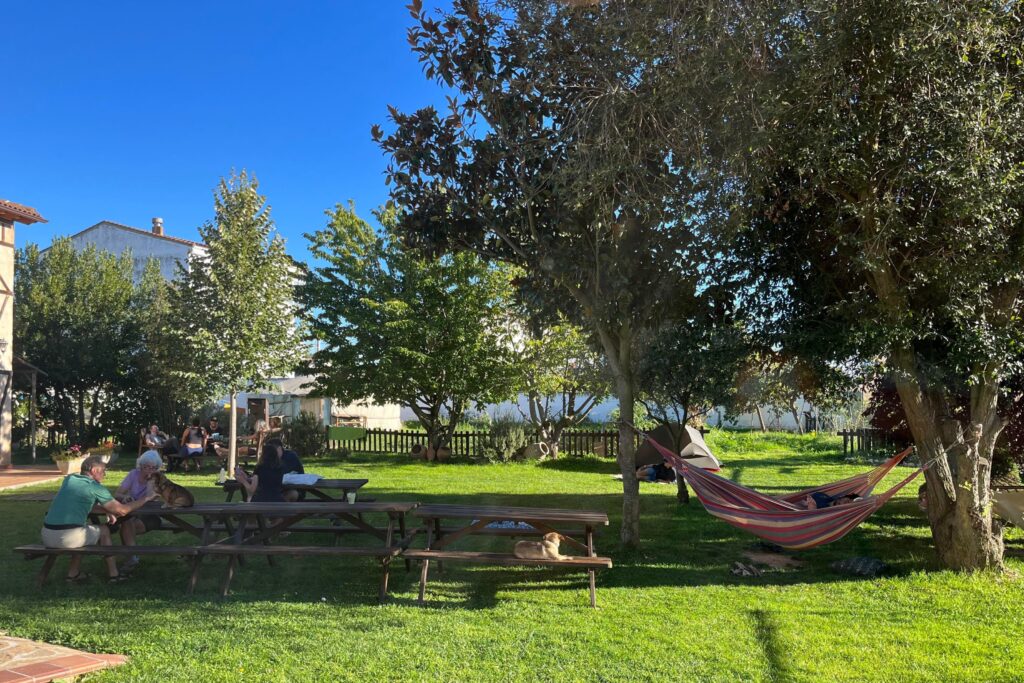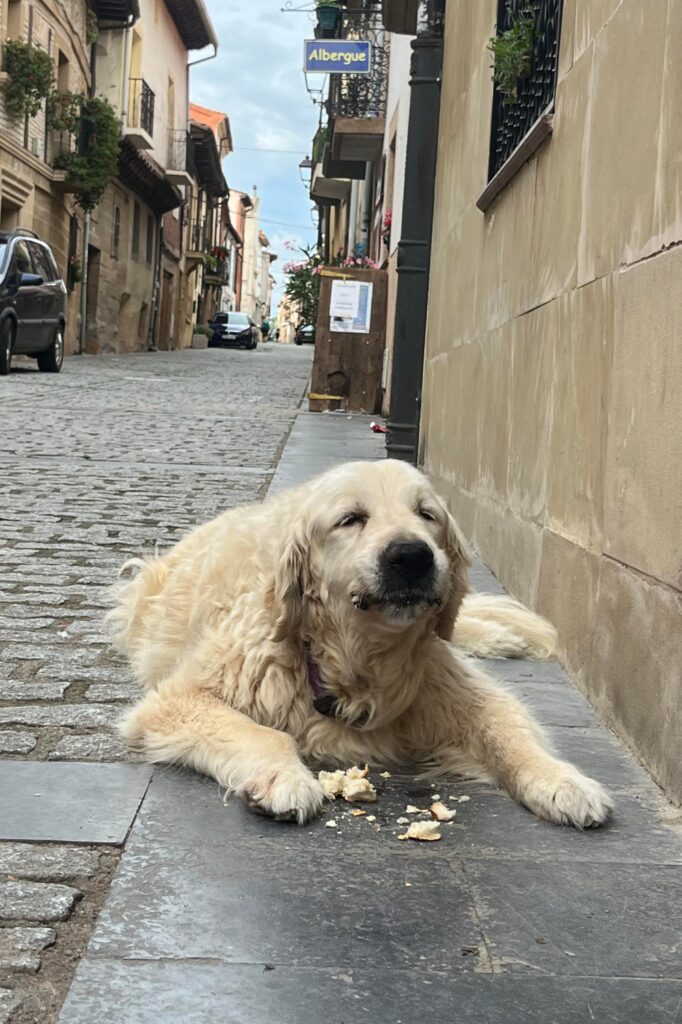The Camino Diaries, Week Two: The Famous Wine Starts To Flow
By week two a camaraderie that sprouted on that first night in France endures as we approach the vast — and hot — plateau, but we know with whom not to share a bunk.

After the punishing summits of the Pyrenees, the Camino to Santiago levels off in Spain’s La Rioja region and the wine for which the region is famous flows copiously at many of the hostels, or albergues, where pilgrims bunk up every evening after six or seven hours of continuous walking.
Leaving Logroño, the capital of La Rioja, the path is bordered on either side by vines overflowing with bunches of grapes caked in dust. The footprints of pilgrims who snuck into the field to try a few are clear. Straggly stray dogs are even bolder than they were in earlier sections of the trail, darting out from the grasses to nip demandingly at our boots.
It’s now week two of what is shaping up to be a five-week trip covering around 500 miles, from the Basque country French village of Saint-Jean-Pied-de-Port to Santiago de Compostela, where the remains of St. James are supposedly kept. I am on what’s called the Camino Frances. Several other routes lead to Santiago, from Portugal or along the Northern coast of Spain, but this is the most popular route for the hundreds of thousands that make the trek each year.

Although summer months may be busier statistically, September, with its mild temperatures and only fleeting rain showers, is considered one of the most pleasant months on the Camino. The paths are not crowded, but there is always someone within eyesight and the distant sound of walking poles clacking on the gravel path is constant.
Daypacks are common — a transport service arrives in the morning to ship your bag, if you’re exhausted, for six euros — although most have shed the weight they overpacked within the first week. In each albergue is a “take it or leave it” bin with fancy skincare products and clothing left behind. Many hikers keep some sentimental baggage — miniscule stuffed animals tied to their backpacks zipper, pins of their home country’s flag, and stained handkerchiefs dangling from their straps.
The villages are similar, but don’t blend together even after two weeks. In Agés, there are chalkboard flower pots blooming with marigolds etched with the names and dates of passing pilgrims. In Grañon, a 15-year-old golden retriever chomps down a stale baguette outside of a bakery. The locals are particularly memorable, some of them happily chatting about their day as they make a cortado. Others shuffle by grumpily, begrudgingly grunting “Buen camino” as they pass you, not even granting a glance.

Rarely do newcomers join at this point, so the faces have become startlingly familiar. The Camino forces you and your companions into a summer camp-like intimacy — you know with whom not to share a bunk bed, because you know who snores; you know who comes in past curfew having had a bit too much to drink. Without even realizing it, you come to know the schedules and tendencies of those walking with you.
“Ugh, we’re bunking with that woman who wakes up at four,” my friend Claudia — with whom I connected in Pamplona and was still walking with when we left Belorado six days later — whispered to me when we arrived, exhausted, in Nájera.
A camaraderie among the pilgrims sprouts, fully formed, on that first night in France. There is a sharp inclination in every pilgrim, almost a desperate need, to help those around them. On my 10th day, suffering from a stabbing pain in my thigh, I sit on the side of the path for 15 minutes to rest. Every single person that passed either stops or at the least asks if I was okay. One girl immediately pulled out a bursting first aid kit, one man (after asking polite permission) adjusted my backpack straps to better fit my shoulders. Another girl — a young woman from Israel — simply sat down next to me, muttered something in Hebrew, and handed me two Advil. By the end of the day we are close friends and will spend the remaining days of her camino walking together.
Some of the hosts along the way encourage the bonding. One night in Burgos, the albergue I am staying at asks its guests to join them for a coffee hour at five. We sit in a support group-style circle, sipping herbal tea and decaf coffee as the host asks us to share why we decided to walk the Camino. Many of the people cite career reasons for doing the Camino. They have just quit their job, they want to discover their passion, or they simply need a break from the ever-moving bustle that is full time work.

That evening in Burgos, however, a deeper meaning for some pilgrims surfaced. One woman I recognize from the first night in Roncesvalles shares that her son had passed six months ago. He had wanted to do the Camino with her, and now she is forced to go it alone, though she claims she feels him with her every day. Another, a young American man, has been injured in Afghanistan and been told he would likely never walk again. He says he wants to embrace the miracle that allows him to undertake the Camino, but is still angry. “I want to hurt people,” he murmured, staring at the ground. “And I’m trying to realize how to fix that.”
While attention-seeking YouTube influencers get the most attention, a majority of people walking the Camino still do it for spiritual or religious reasons — people are attempting to find an answer to a question. That ultimately is what’s creating the sense of kinship among the pilgrims (along with the physical feats faced alongside each other) — the questioning and thoughtfulness that’s existent in everyone on a day to day basis.
Starting tomorrow, from leaving Burgos until León, are the dry ongoing plains of the Meseta. It grants much needed alone time after the excitement of the first two weeks, but also quite a loneliness — the days are long, repetitive, and many take buses to skip this portion of the Camino. However, this mentally challenging portion is notorious for illuminating exactly what you needed to find in this walk. It may just test you a little bit to get there.

